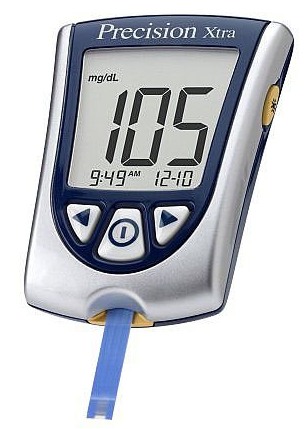When a patient has diabetes, the family and health care providers watch out for the levels of blood sugar whether it will go up or down. Medically, it is referred to as hypoglycemia (low blood sugar) or hyperglycemia (low blood sugar). The normal blood sugar level ranges from 3.6 and 5.8 mmol/L or 65-105 mg/dl. Blood sugar higher or lower than that can pose threat and problems to the body. Between the two, health care professionals are most likely looking out for the signs of hyperglycemia and fails to look for low blood sugar signs and symptoms.
Typically, blood sugar which will be turned into glucose fuels up the body’s cells in order to do its specific functions. But glucose cannot be transported into the cell without the use of insulin, which is secreted in the pancreas. In patients with diabetes, their body cannot secret or there is a dysfunction in the insulin secretion thus, glucose will remain in the blood stream. Hyperglycemia will then occur. Sometimes, if there is less blood sugar, hypoglycemia happens.
There are many causes of low blood sugar aside from diabetes. The most common is skipping a meal. Glucose is mainly found in foods especially carbohydrates. Aside from that, the use of alcohol can lead to low blood sugar. Overmedication of insulin an ant diabetic pill can lead to hypoglycemia. That is why, when diabetic patients take ant diabetic drugs, the time of administration and the anticipated peak of the drug should be noted in order to avoid hypoglycemia. Other medications like beta-blockers are also one of the cases.
Certain diseases and conditions can lead to low blood sugar. This includes: severe infection, kidney failure, liver failure, adrenal insufficiency, congenital or genetic problems, diabetes type I and II, insulinoma or insulin-producing tumor. Cancer too can cause low blood sugar because patients don’t have the appetite to eat food.
When a patient has these conditions, it is crucial to watch out for low blood sugar symptoms. Usually, the patient will fill hunger. This signals the brain that there is a need to eat to fuel up the cells. Other symptoms also includes paleness, trembling of upper and lower extremities, feeling weak or body malaise, irritable, the vision becomes blurry, convulsions, loss of consciousness but only temporary, perspiration and rapid heartbeat. These are also the low blood sugar symptoms for patients without diabetes. In worst cases, it can lead to coma and eventually death.
Even children can also feel hypoglycemic. Since children cannot talk straight, the cues for parents to know the low blood sugar symptoms in children should be determined. When in a state of hypoglycemia, the first notable sign is that the child will change his or her mood. This is then followed when a child feels shaky the heart seems to pound. The child also appears pale and when hands are held, it is cold and clammy. Then the child will cry or feel irritable. In some cases when the child knows how to speak, he or she can verbalize the need to eat.
There are several ways on how to know if the patient is hypoglycemic but what parents or adults can do in order to check their blood sugar levels is to have a glucometer and a lancet device. This entails pricking the fingers and a few drops of blood into the strip and inserting it into a device which checks the blood sugar levels.
In terms of treatment, the physician will give glucose injections to patients. In the hospital, patients are given intravenous that contains dextrose. The doctor will order D50 water or D5 water depending on the severity of the problem.
When at home and the patient is conscious but weak, there are measures that can be made to help improve the patient’s condition giving 10-20 grams of carbohydrate in form of 3-4 ounces of grape, apple or orange juice, about 120-150 ml of non-diet soda or soft drinks, a slice of bread, 4 pieces of crackers, a serving of cake, icing cakes are also
ideally given. This will help improve the condition of the patient in 5-10 minutes. In children, all these can also be given and in diabetic patients, it is not advisable to overfeed then because hyperglycemia can happen after.
To avoid feeling low blood sugar symptoms, it is essential to prevent this from happening rather than taking action once the problem is present. To do so, it is highly suggested that eating 5 to 6 times a day with 3 large meals and using balanced carbohydrate can help lessen hypoglycemic problems. A balanced meal of meat, chicken or beef along with fruits and vegetables in one meal is ideal. Nutritionists also suggest eating corn, potatoes, sweet potatoes, spinach and many others to avoid the problem. Skipping meals is never okay since this is one of the major causes of low blood sugar. Avoiding high caffeinated foods and drinks like coffee, tea and even some sodas can help in the avoiding hypoglycemia since these drinks will give you a certain level of fullness making the patient lack the appetite for eating. Alcoholic drinks should be avoided or if possible be limited. There are cases wherein men and women who drink didn’t have any food intake. In the end, they suffer from low blood sugar symptoms.
Lastly, experts suggest exercise is beneficial. Although primarily exercising can lower the blood sugar, it will not come to a point wherein hypoglycemic episodes will occur. However, it is also crucial to eat or have some food intake before exercising.
References:
http://www.emedicinehealth.com/low_blood_sugar_hypoglycemia/article_em.htm
http://en.wikipedia.org/wiki/Blood_sugar
http://www.drugs.com/cg/non-diabetic-hypoglycemia.html
http://www.netdoctor.co.uk/diseases/facts/bloodsugarlow.htm

